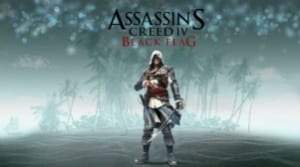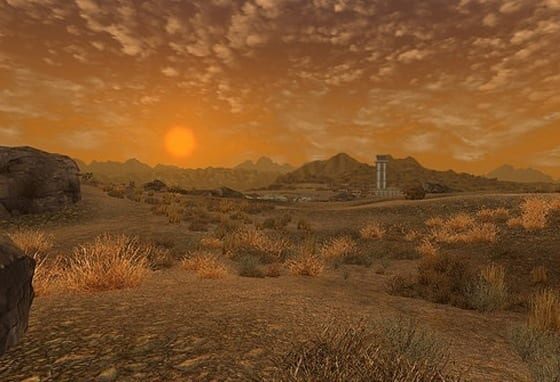
As an assassin, you’re kind of pigeon-holed by society. Sneak here, stab that guy in the face, escape without incident and, heaven forbid you are caught, kill every damned person in the area. Hell, kill the animals too, just in case. With Assassin’s Creed IV: Black Flag your typical assassin gameplay returns, but there’s so much more. Truly, it feels like a new game and, full review be damned, I’ll just go ahead and say it: Assassin’s Creed IV is the best game of the franchise. It’s not that they’ve included the open seas as part of your world, it’s what they’ve done with it. Ubisoft has meticulously crafted a world filled with exploration, interesting combat (that allows players to play as a brute or as a silent killer), all-new hunting, crafting, and upgrading, and has done so on land and on the open-sea. Truly, Assassin’s Creed IV is two separate experiences that blur together to create a seamless, beautiful world filled with magnificent characters and vacation-like settings. That is, if you enjoy vacations where you blow people up.
And we all know you do.

The biggest change, of course, is the implementation of the open seas. Ship combat was introduced in Assassin’s Creed III and was effective, creating a nice change of pace from the tedious gameplay which was that game’s biggest issue. In Assassin’s Creed IV though, your ship is essentially a new character, one that grows and improves alongside Edward Kenway, the privateer-turned-pirate. Your ship, called The Jackdaw, is initially outfitted with some basic weapons and very poor armor. As you progress through the story, you’re presented with opportunities to obtain necessities like wood, metal, or cloth in order to upgrade the ship. Of course, how you come about these materials is nefarious to say the least.
Piracy. You’re a pirate and you steal things.

Once you’ve upgraded The Jackdaw though, barely a ship on the seas can stand up to you and, if you’re skilled at piloting your ship, you can make quick work of fleets of ships. The Royal Navy, often carrying tens of thousands of Reales which was the currency of the time, is a fairly decent target and their convoys are scattered throughout the world. For the hunter in you, harpooning is available, but is little more than a mini-game. Granted, you get some neat rewards and battling a monstrous white whale, one of the targets, can be really interesting, but after doing the same, “Search, aim, throw,” over and over again, it gets incredibly boring.
Nevertheless, when you spend so much time on the sea there are two inevitabilities. First, scurvy. Assassin’s Creed IV is proudly free of scurvy, so kudos to Ubisoft for not killing the fans. Second, boredom. The life of a pirate was actually pretty boring, raping and pillaging aside. Lots of time was spent in a drunken haze or swabbing the deck. There’s a seamen joke here, but I’ll let you just formulate it yourself. Regardless, Ubisoft has done a wonderful job of working with a widespread area that’s typically devoid of much traffic and turning the entire sprawling region into a living, breathing world. Certain areas present players with challenges of varying difficulties, none more awe-inspiring than the Legendary Ships that hold anchor at the corners of the map. These floating fortresses act as a beacon to any who dare to sail near, goading players to, “go ahead and try, if you dare.”
And then they kill you. And you love it. Mostly.

And contradictory to the gameplay on the water, the land experience rivals that of previous installments of the franchise, but adds so much more. Your expected free-running system returns and harkens back to playing as Connor — the grandson of current protagonist Edward Kenway — running up and over buildings, but also using the environment as a way of locomotion or stealth. Bushes and shrubs litter the landscape and are used by Edward for moving through restricted areas, eavesdropping (sadly yes, these missions are back), or taking cover after a particularly nasty battle. Conversely, players who decide to take a vertical approach will find no fewer routes in the trees than on the ground, a testament to the intricate design put into each and every setting. Because of the variety of design, there’s rarely ever one single “line” of movement that is the end-all to completing a mission. Most often, you can use the bushes to kill-then-hide bodies, or you can reign death from above and use your wrist blades to shishkebab unsuspecting enemies — there’s just no wrong way to kill a Templar!
And Edward Kenway, oh Edward. Most narrative from an Assassin’s Creed game focus on the “good guy put into a bad situation” character. Edward Kenway is different. In fact, from the onset he’s a bastard. Even in the few instances where you see the true Edward, the one showing his motives for doing what he does, it’s overshadowed by the fact that just prior to this memory showing his softer side, he killed 49 people, 12 crocodiles, 17 monkeys, 6 wild pigs, and sank 200 ships. I told you, he’s a bastard, and that’s atypical for any who know the franchise’s history. Because he’s such a scoundrel it’s easier to justify sinking a ship unprovoked. Or stabbing a group of englishmen “just because”. But that softer side, the family side of Edward Kenway, is there to reign in the scalawag and humanize the character, which creates an inner struggle with Kenway’s motivations.

Spanning an entire region of the world is no simple task, but filling it with meaningful, fun encounters is damned near impossible. Thankfully the folks behind Assassin’s Creed IV: Black Flag have recognized the issues from previous games and removed or modified them while building on the systems that actually worked. The combat can still be as simple as countering each attack, but the implementation of pistols and darts takes it a step up and allows players to really decide how they want to approach each battle. The open seas merge with land to create some interesting opportunities for Edward, but the free-running system still needs a touch of work. Often you’ll find yourself jumping this way or that, taking yourself out of combat or simply falling to your doom because your camera was angled one degree too far to the right. Overall though, Ubisoft should be proud of the product they’ve put out. To avoid spoilers the world outside of the Animus was intentionally not discussed here, although it seems that Ubisoft recognizes that it’s really a minor part of the game and built that experience to mirror that feeling. For anybody who’s on the fence about this franchise, don’t be. This game is worth your time and your money.
Overall score 9 out of 10














